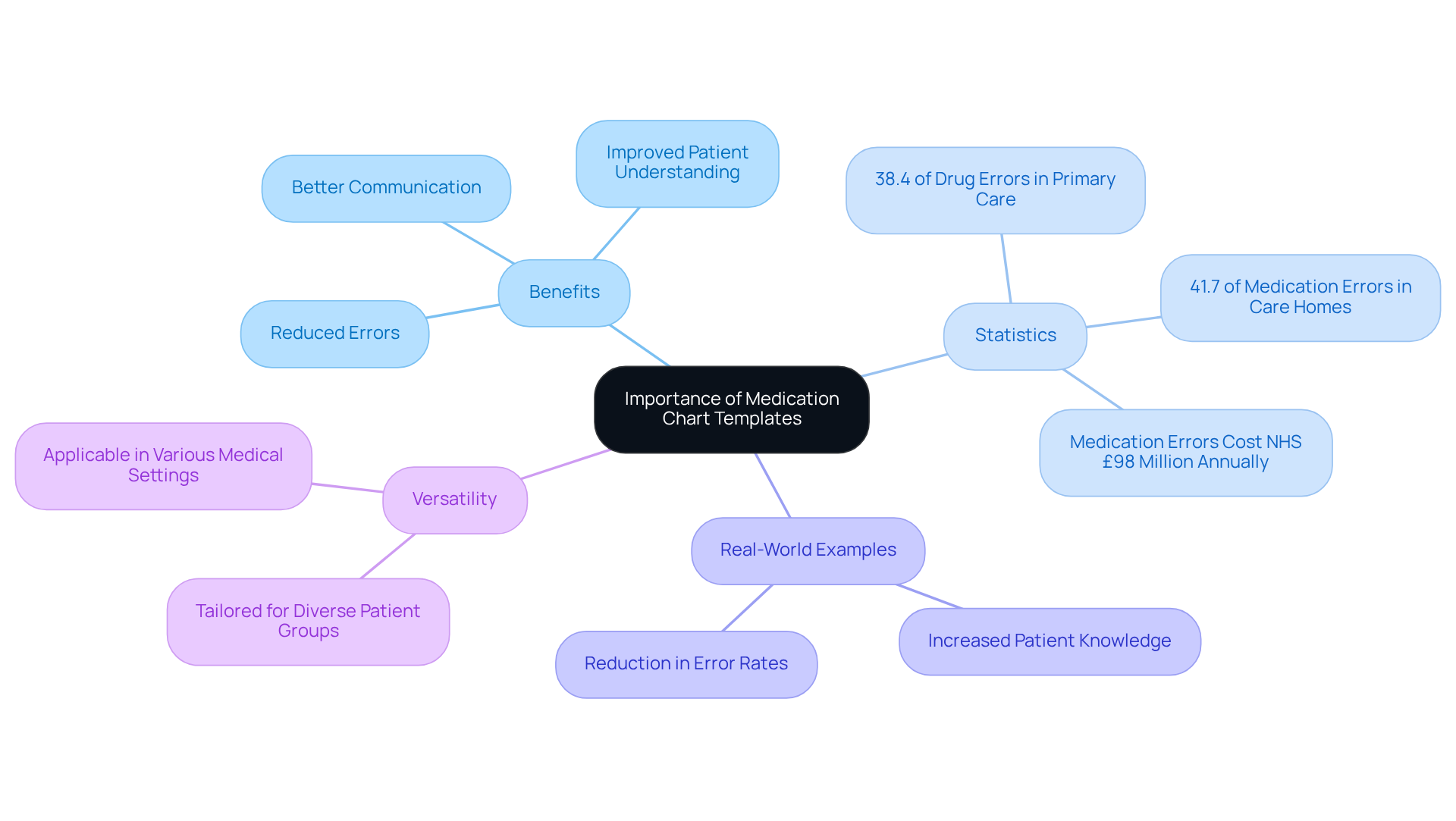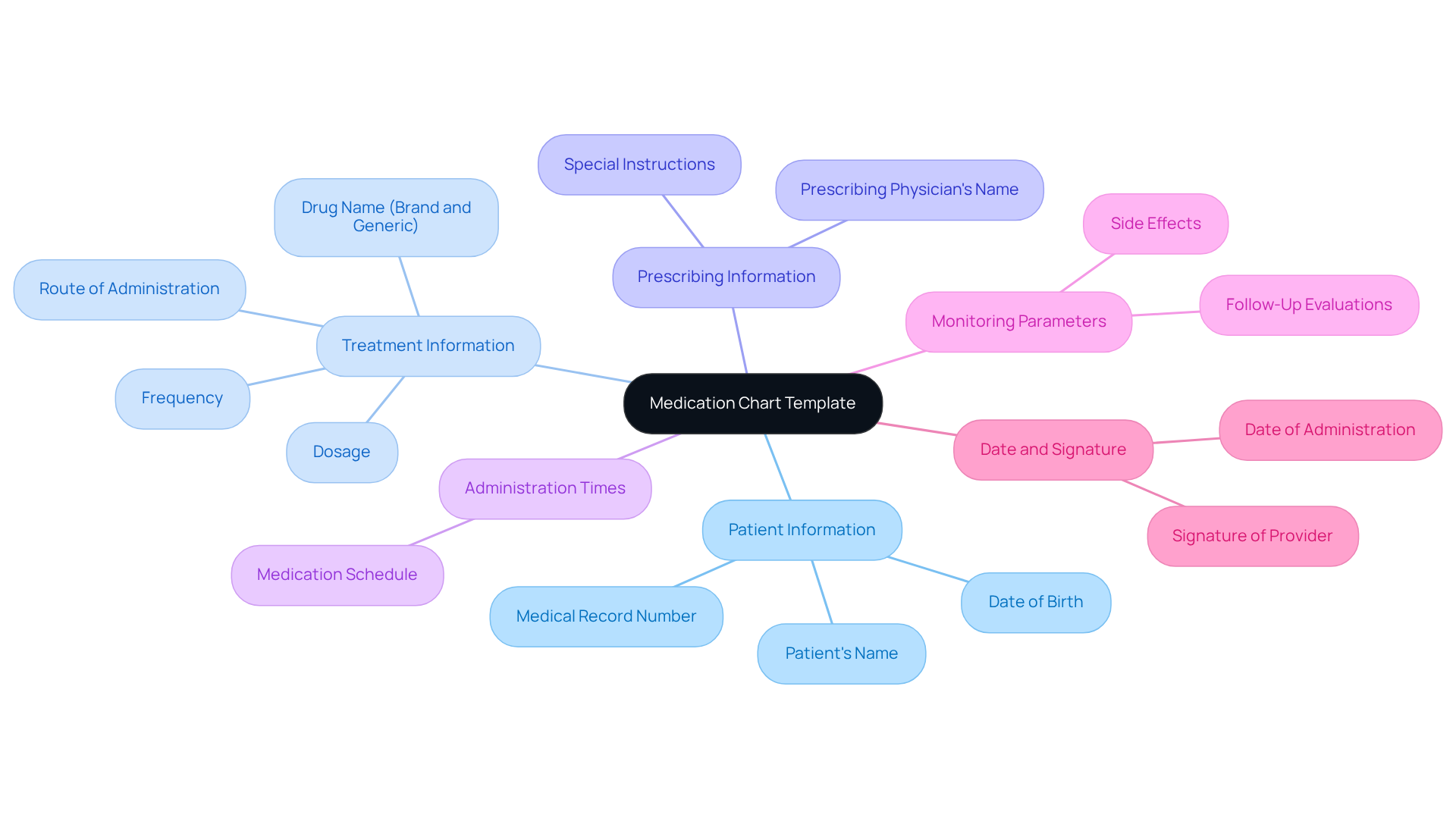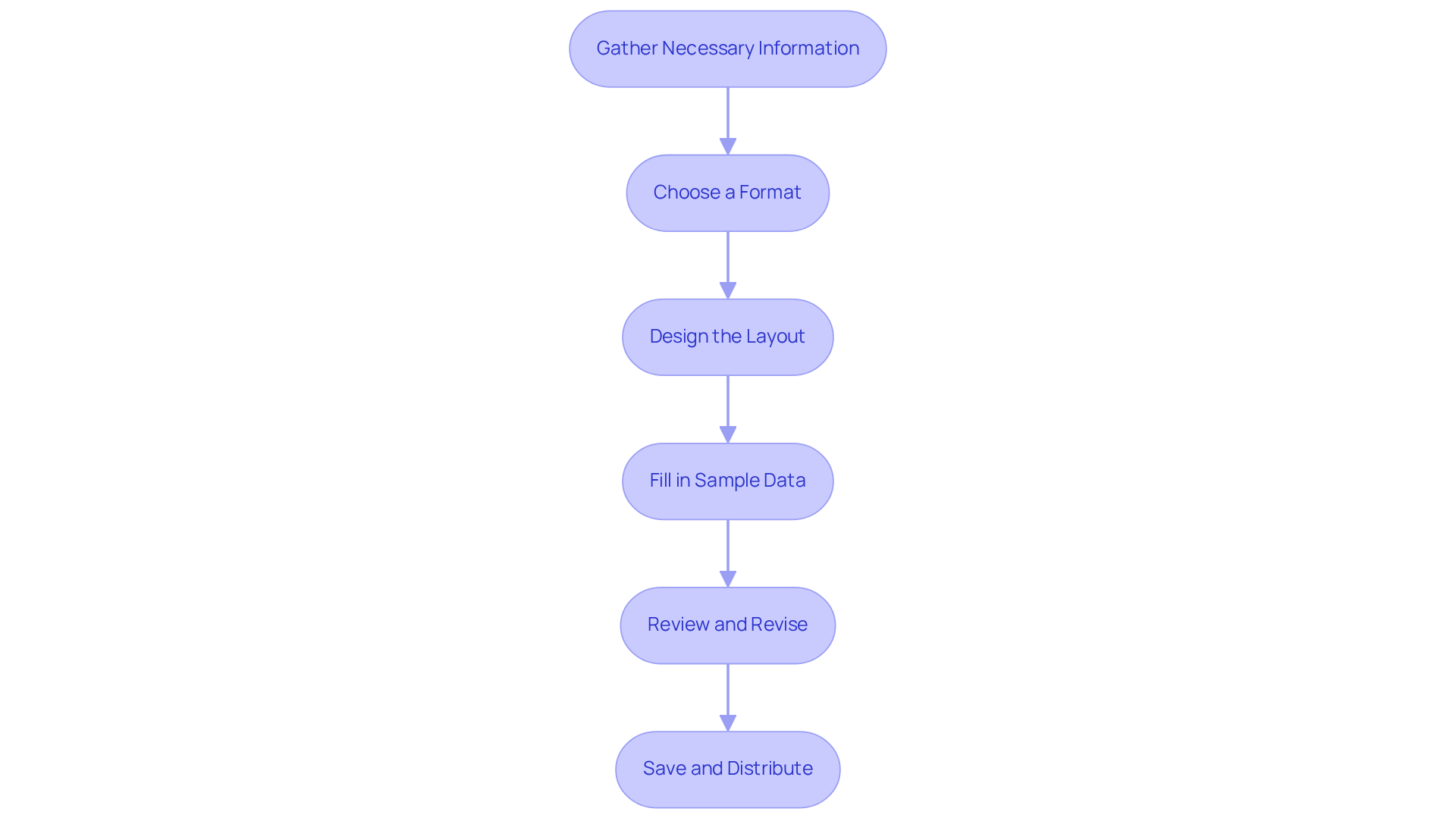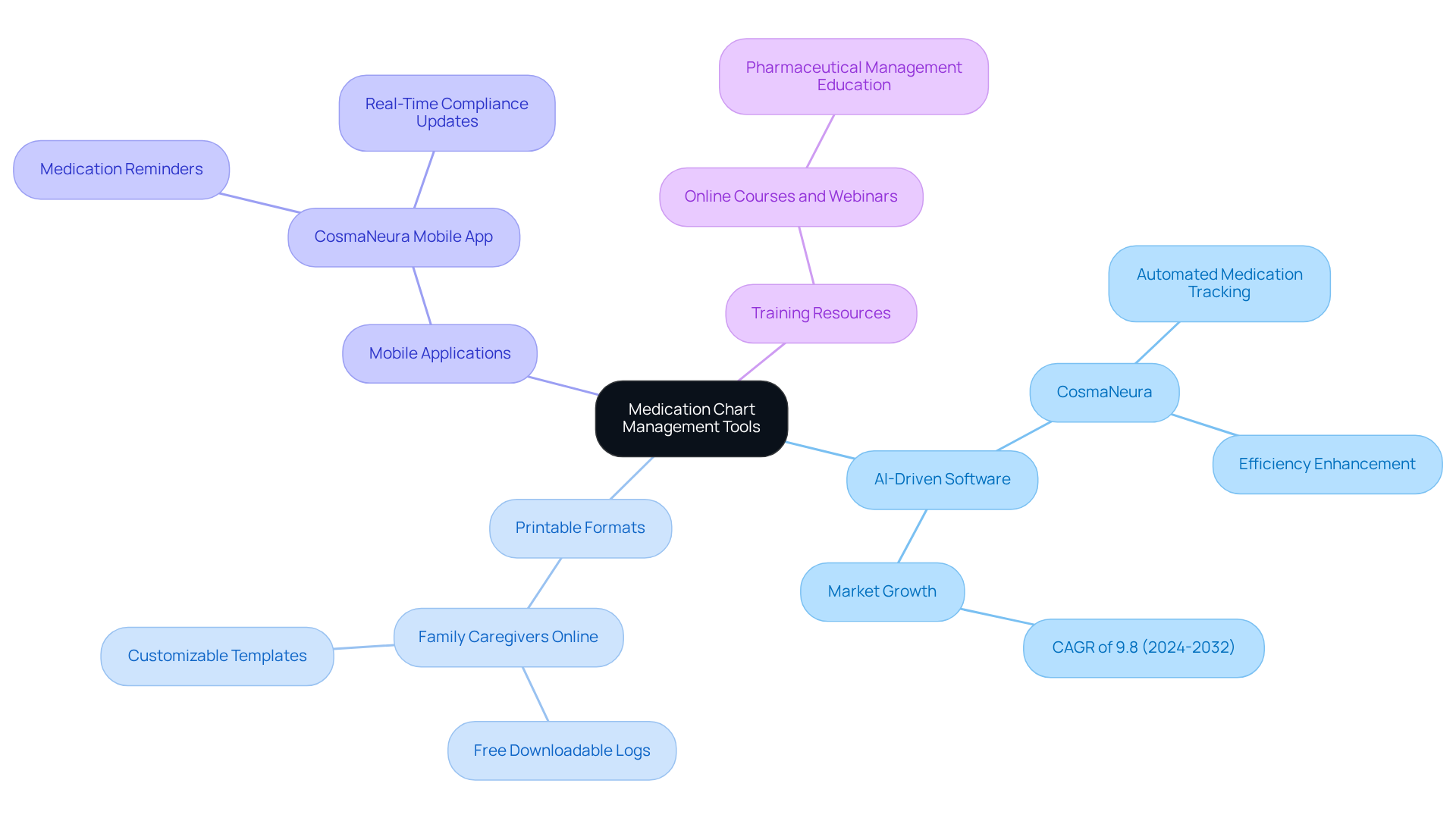Overview
Creating an effective medication chart template for patient care is not just a task; it’s a vital step toward improving treatment adherence and reducing medication errors. Have you ever felt overwhelmed by the administrative burdens that can distract from patient care? A well-structured template, which includes essential components like patient information and monitoring parameters, can significantly enhance communication among healthcare providers. This improvement is not merely theoretical; real-world examples and expert testimonials show that it leads to better patient outcomes.
Consider how a thoughtful template can alleviate some of the stress you face daily. By streamlining information, it fosters collaboration and clarity, allowing you to focus more on what truly matters—your patients. Embracing this approach can transform your practice, making it not only more efficient but also more compassionate.
Let’s take action together. Explore how implementing a tailored medication chart can support you and your team in delivering the best possible care. Your commitment to enhancing patient outcomes is commendable, and with the right tools, you can make an even greater impact.
Introduction
In the intricate landscape of healthcare, every detail can significantly impact patient outcomes. Medication chart templates stand out as essential tools for providers navigating this complex environment. These structured frameworks not only simplify the administration of medications but also play a vital role in reducing the alarming rate of prescription errors. Did you know that nearly 38.4% of drug errors occur in primary care settings? By exploring the creation and implementation of effective medication chart templates, healthcare professionals can enhance care delivery and foster better communication. Ultimately, this effort safeguards patient safety.
Yet, with so many options available, how can one determine the most effective design and components? It's crucial to consider the emotional and administrative burdens that healthcare providers face daily. By addressing these challenges, we can work together to ensure optimal patient care. Let’s delve deeper into how we can support one another in this vital mission.
Understand the Importance of Medication Chart Templates
In the demanding world of healthcare, a medication chart template serves as a vital tool that helps alleviate the emotional burdens faced by providers. These templates offer a systematic approach to monitoring patient treatments, which is crucial in reducing prescription errors. Did you know that 38.4% of drug errors occur in primary care? This statistic underscores the pressing need for efficient documentation practices that can ease the stress on healthcare teams.
By implementing a medication chart template, care providers can simplify drug administration procedures and foster better communication among care teams. This not only enhances the overall experience for individuals but also leads to improved outcomes. Real-world examples reveal that facilities using these frameworks have seen a notable increase in patients' understanding of their treatments, alongside a reduction in error rates.
Moreover, these models can be tailored to address the unique needs of diverse patient groups, making them versatile tools in various medical settings. Experts agree that the use of a medication chart template for maintaining organized treatment records is essential in preventing administration mistakes, ultimately creating a safer healthcare environment for everyone involved. Let's work together to embrace these solutions and ensure a nurturing experience for our patients.

Identify Essential Components of a Medication Chart Template
A useful medication chart template is essential for improving care and ensuring adherence to treatments. It should encompass the following essential components:
- Patient Information: Include the patient's name, date of birth, and medical record number for accurate identification.
- Treatment Information: Record the name of the drug (both brand and generic), dosage, frequency, and route of administration to ensure clarity in treatment.
- Prescribing Information: Document the name of the prescribing physician along with any special instructions related to the treatment, facilitating better communication among care providers.
- Administration Times: Clearly indicate when each medication should be taken, helping to prevent missed doses and improve adherence rates.
- Monitoring Parameters: Provide space for noting any side effects or necessary follow-up evaluations, which is crucial for ongoing individual safety and care.
- Date and Signature: Include the date of administration and the signature of the administering medical provider for proper documentation and accountability.
Statistics reveal that nearly 50% of Americans with hypertension are improperly medicated. This highlights the emotional challenge healthcare providers face in ensuring their patients receive the best care. Better adherence could help prevent approximately 89,000 hypertensive deaths, underscoring the critical need for effective tracking. By employing a well-organized medication chart template, medical professionals can greatly improve individual outcomes and promote a culture of safety and adherence in drug management.
As Dr. John Smith, a medical expert with over 20 years of experience, states, "A well-organized prescription chart is not just a tool; it's a lifeline for ensuring patient safety and adherence." It allows us to provide the best care possible.
Instances of efficient prescription chart designs can be located in different medical environments, like the one utilized at City Hospital, which features color-coded sections for convenient reference and monitoring. Furthermore, tools such as Medisafe and MyMeds applications can aid healthcare professionals in developing and overseeing treatment charts efficiently.

Create Your Medication Chart Template: Step-by-Step Instructions
Creating an effective medication chart template may seem overwhelming, but it doesn't have to be. By following these compassionate steps, you can simplify the process and enhance patient care.
-
Gather Necessary Information: Begin by collecting all relevant client data, such as current treatments, dosages, and administration schedules. This foundational step ensures that the chart accurately reflects the patient's treatment regimen. Using a medication guide can significantly reduce the chances of medication errors, such as missing a dose or overdosing.
-
Choose a Format: Consider whether to create a digital layout using software like Microsoft Word or Excel, or to opt for a printable version. Digital templates allow for easier updates and sharing, while printed versions may be more suitable in certain healthcare settings.
-
Design the Layout: Organize your chart by creating columns for essential components like drug name, dosage, frequency, and administration instructions. A clear design not only improves usability but also facilitates healthcare providers' ability to monitor patient prescriptions effectively. A standardized format makes it easy to add new medications to the list.
-
Fill in Sample Data: Input sample medication information to visualize the chart's appearance and functionality. This practice helps identify any potential issues in the layout or design before finalizing the format.
-
Review and Revise: Take the time to ensure that the template meets all necessary requirements and is user-friendly. Gathering feedback from colleagues or clients can lead to modifications that enhance its efficiency and accessibility. This collaborative approach allows health professionals to manage multiple clients' records in one place, which is crucial for those with busy schedules.
-
Save and Distribute: Finally, save the completed document and share it with the appropriate staff members for patient care. A standardized format can significantly reduce the time spent on documentation, with some providers reporting up to a 70% decrease in charting time. As Dr. Fraser noted, "I’m now down to around 40 minutes" for writing notes, underscoring the time-saving benefits of using a structured chart format.
By following these steps, medical professionals can create a comprehensive medication chart template that not only streamlines drug management but also enhances safety and quality of care. Remember, your efforts in creating a clear and organized chart can make a world of difference in the lives of your patients.

Explore Tools and Resources for Effective Medication Chart Management
Managing medication charts can be a daunting task for healthcare providers, often leading to emotional strain. The administrative burdens can detract from the core mission of providing compassionate care to individuals. However, there are various tools and resources available that can help ease this challenge.
-
AI-Driven Medication Management Software: Platforms like CosmaNeura utilize advanced AI solutions to automate medication tracking and administration. This significantly reduces the administrative load on providers, allowing them to focus more on the care of their patients. The integration of AI in pharmaceutical management systems is projected to enhance efficiency, with the market expected to grow at a CAGR of 9.8% from 2024 to 2032.
-
Printable Formats: Resources such as Family Caregivers Online offer free downloadable logs for tracking prescriptions, customizable to meet individual healthcare needs. These templates promote better organization and tracking of treatment schedules, which is vital for adherence.
-
Mobile Applications: CosmaNeura also provides mobile applications designed for reminders and tracking. These tools assist individuals in adhering to their prescribed schedules, while also offering medical providers real-time updates on compliance, ultimately improving patient management.
-
Training Resources: CosmaNeura is committed to ongoing education, providing online courses and webinars focused on pharmaceutical management. These resources equip medical practitioners with the knowledge to utilize treatment charts effectively, contributing to improved client outcomes and adherence rates.
By incorporating these tools and resources, healthcare providers can enhance their medication management practices with a medication chart template. This not only leads to improved patient care but also fosters greater satisfaction among those they serve. How can you begin to integrate these solutions into your practice today?

Conclusion
Implementing an effective medication chart template is vital for enhancing patient care and reducing the risk of medication errors. These templates are essential tools that streamline the documentation process and foster better communication among healthcare providers. By adopting a systematic approach to monitoring treatments, medical professionals can alleviate the emotional strain associated with managing patient medications.
Have you ever felt overwhelmed by the administrative burdens that can detract from patient care? The article highlights several key components that constitute an efficient medication chart, including:
- Patient information
- Treatment details
- Monitoring parameters
It emphasizes the importance of clarity and organization in these charts, showcasing how tailored templates can cater to diverse patient needs. Moreover, practical steps for creating a medication chart template are outlined, ensuring that healthcare providers can easily implement these solutions in their practice.
In conclusion, the significance of medication chart templates cannot be overstated. They not only improve patient adherence and safety but also empower healthcare teams to deliver compassionate care. By embracing these tools and integrating available resources, providers can enhance their medication management practices, ultimately leading to better patient outcomes. The call to action is clear: prioritize the development and utilization of effective medication chart templates to create a safer and more efficient healthcare environment.




